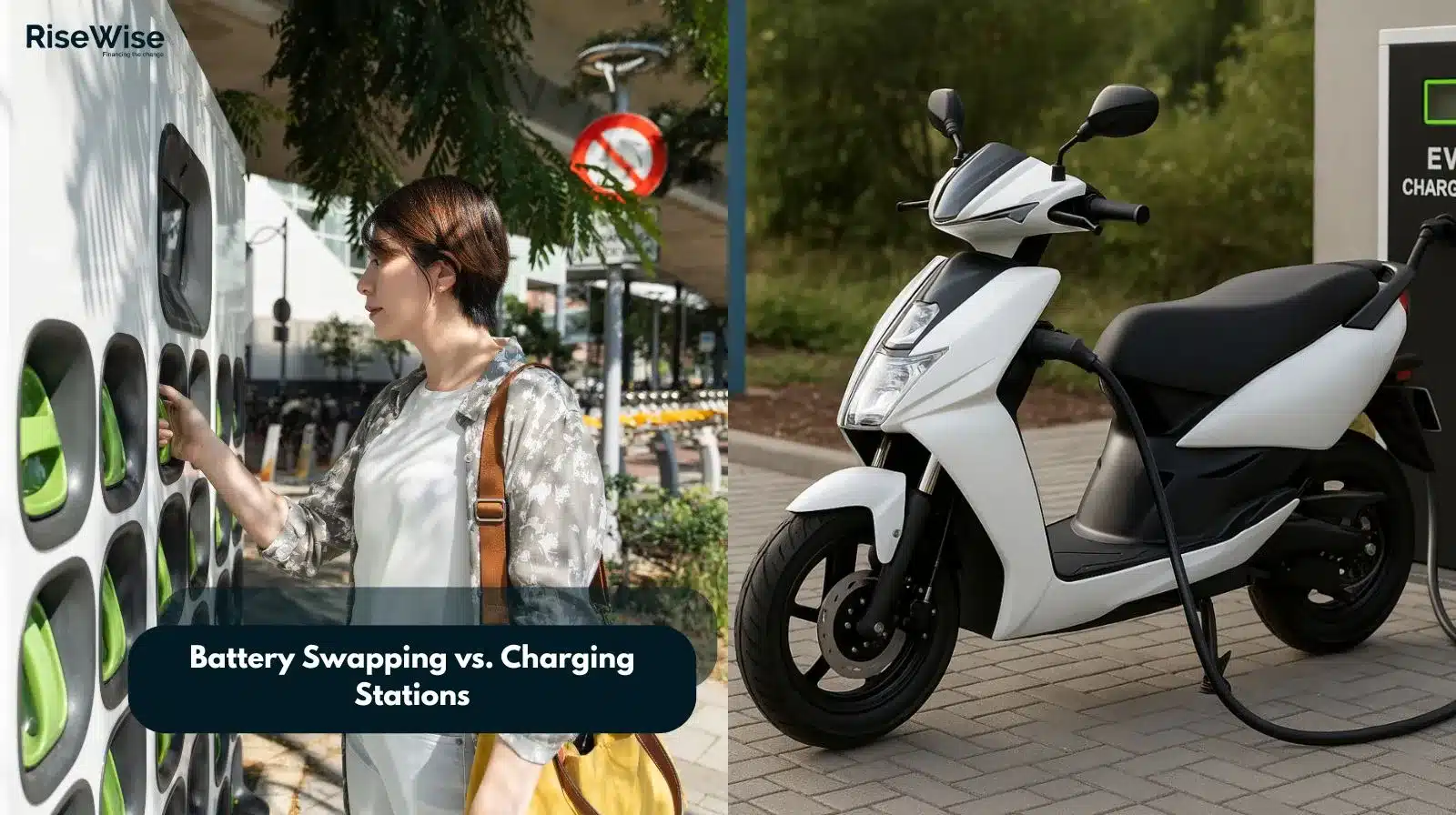India’s electric vehicle (EV) revolution is accelerating faster than ever driven by government policies, affordable EV finance options, and the rise of accessible EV loans.
As more people and businesses adopt EVs, one big question emerges:
Should India prioritize battery swapping or focus on expanding charging stations?
Both systems power EVs but offer different experiences. Let’s explore their benefits, challenges, and how each contributes to India’s green mobility mission.
What Is Battery Swapping?
Battery swapping lets EV owners replace a drained battery with a fully charged one at a station — just like refilling fuel. The process takes less than 5 minutes, making it ideal for time-sensitive users.
This model is especially useful for EVs for delivery boys, ride-sharing vehicles, and e-rickshaws that operate continuously throughout the day.
Advantages of Battery Swapping
- Quick Turnaround:
No waiting for charging — the swap is completed in minutes. Perfect for delivery fleets that rely on constant mobility. - Lower Upfront Cost:
Since users can lease the battery, the vehicle cost drops. Paired with affordable 2 wheeler EV loans, this makes EVs financially accessible to the masses. - Ideal for Commercial Use:
EVs for delivery boys and courier fleets benefit most, as they can swap batteries multiple times daily and avoid idle time. - Centralized Battery Care:
Operators manage battery quality, charging, and recycling, ensuring safety and longevity.
Limitations of Battery Swapping
- No Standardization Yet:
Different battery sizes and designs make universal swapping difficult. - High Setup Cost:
Requires investment in infrastructure, automation, and spare battery inventory. - Limited Availability:
Swapping stations are still concentrated in metro cities. - No Battery Ownership:
Users lease the battery, which can raise warranty and performance concerns.
What Are EV Charging Stations?
Charging stations supply electricity directly to the vehicle’s battery. Depending on the charger type, it can take 30 minutes (fast charging) to 6–8 hours (normal charging).
Charging stations are the more traditional and widely accepted model, suitable for private car owners and long-distance commuters.
Advantages of Charging Stations
- Universal Compatibility:
Works with all EV models, from scooters to SUVs. - Lower Setup Cost:
Easier to install compared to a full battery-swapping hub. - Smart Charging Integration:
Many chargers now feature digital payments, mobile apps, and renewable energy options. - Convenient for Home Use:
Ideal for those who can charge overnight.
Limitations of Charging Stations
- Longer Charging Time:
Even with fast chargers, it can take up to 45 minutes for an 80% charge. - Limited Accessibility in Rural Areas:
Not all regions have the grid capacity or space for public charging. - Peak Hour Congestion:
Popular locations can have waiting times during high demand.
Higher Upfront Vehicle Cost:
Since users buy the battery, the total cost increases — though EV finance solutions can offset this burden.
Battery Swapping vs. Charging Stations: A Detailed Comparison
| Criteria | Battery Swapping | Charging Stations |
| Refueling Time | 2–5 minutes | 30 mins – 6 hours |
| Initial EV Cost | Lower (battery excluded) | Higher (battery included) |
| Infrastructure Cost | High (complex setup) | Moderate (easier installation) |
| Best For | Fleets, e-rickshaws, delivery vehicles | Private cars, buses, long-distance users |
| Scalability | Limited by standardization | Easier to expand |
| Government Focus | Emerging policy support | Strong, nationwide rollout |
| Battery Maintenance | Operator managed | User managed |
| Environmental Impact | Centralized recycling | Decentralized recycling |
India’s EV Landscape: One Size Doesn’t Fit All
India’s EV market includes two-wheelers, three-wheelers, cars, and commercial fleets, all with different charging needs.
That’s why both technologies must coexist for the ecosystem to thrive.
For Fleets and Delivery EVs
Battery swapping works best.
Delivery partners using EVs for delivery boys can maximize uptime. Fleet operators save costs and benefit from quick turnarounds — especially when supported by flexible EV finance and leasing models.
For Private EV Owners
Charging stations are the go-to option.
Most individuals prefer home or office charging setups, especially those who purchased through 2 wheeler with manufacturer-provided chargers.
Government Support for EV Infrastructure
The Government of India is encouraging both charging and swapping models through supportive policies:
- FAME-II Scheme:
Offers incentives for EV buyers and supports public charging expansion. - NITI Aayog’s Battery Swapping Policy:
Aims to standardize batteries and promote private sector participation. - PM E-DRIVE Scheme:
Focuses on nationwide EV accessibility through subsidies, EV finance, and affordable vehicle ownership. - State Initiatives:
States like Delhi, Maharashtra, and Karnataka provide subsidies and infrastructure support for both models.
Conclusion
India’s EV transformation depends on how quickly and efficiently we can build charging and swapping infrastructure.
Battery swapping delivers speed, convenience, and cost-effectiveness for high-use fleets.
Charging stations offer reliability, scalability, and wide compatibility for private users.
Both are vital pillars of the nation’s clean mobility mission. With supportive government policies, private partnerships, and technology innovations, India can become a global leader in EV adoption not just in vehicles, but in the infrastructure that keeps them running.

